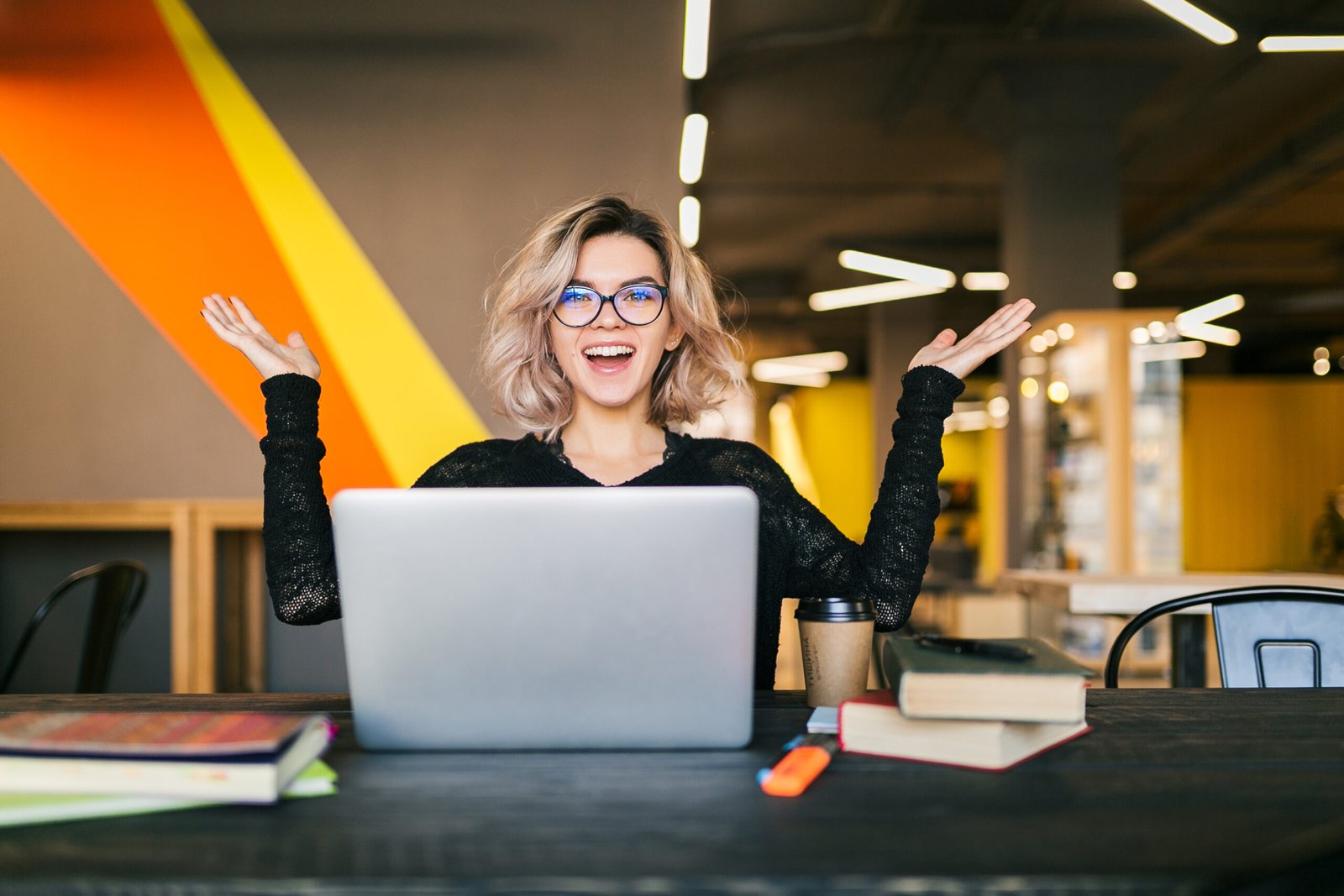Introduction
The digital marketing landscape in 2024 is marked by rapid advancements in AI and machine learning, necessitating the integration of marketing asset management solutions. These solutions are essential for organizing, storing, and retrieving marketing assets efficiently, enabling marketers to keep pace with the dynamic changes in strategy and content demands. As AI increasingly influences content creation and SEO, asset management systems provide a vital framework for managing and updating digital assets in real-time.
Adaptability is key in this fast-evolving environment, with a focus on agile strategies responsive to consumer feedback. Marketing asset management solutions support this adaptability, allowing for quick modifications and deployment of marketing materials. Additionally, they play a crucial role in ensuring responsible AI usage, maintaining compliance, and aligning with brand integrity.
Sustainability in marketing and the move towards a cookie-less future further highlight the importance of effective asset management. These systems streamline the organization and analysis of diverse digital assets, crucial for video advertising and new search trends like voice and image searches.
Content marketing, a principal component of digital strategies, benefits significantly from asset management solutions, facilitating the proactive management and optimization of content. In summary, marketing asset management solutions are revolutionizing the way digital marketing strategies are executed, ensuring effectiveness and competitiveness in the rapidly changing digital marketing landscape.
Understanding Marketing Asset Management
Marketing Asset Management (MAM) is essential in modern marketing, focusing on centrally organizing and distributing marketing assets for ease of use. MAM is crucial for managing various files, documents, logos, and templates in marketing departments of all sizes. It enables marketers to efficiently find, verify, and use assets without compromising brand integrity.
Key Digital Assets in Marketing
Internal Assets: Training materials, brand guides, cheat sheets, internal emails, messaging matrices, competitive sell sheets.
External Assets: Videos, podcasts, whitepapers, lead magnets, landing pages, reports, blog content, external emails, social media content, advertisements.
These assets undergo a lifecycle from creation to becoming outdated and are stored for accessibility.
Importance of MAM
Centralized Content Library: Facilitates easy access to pre-approved marketing assets.
Quick File Retrieval: Efficient organization and tagging of assets.
Brand Consistency: Maintains uniformity in marketing communications.
Marketing and Sales Alignment: Ensures consistent messaging between teams.
Workflow Efficiency: Streamlines asset management for meeting deadlines.
Content Repurposing: Simplifies the reuse of existing marketing materials.
Independent Asset Access: Reduces interdependency among team members.
Timesaving: Prevents duplication in asset creation.
Best Practices
Tool Integration: MAM systems should integrate with other enterprise tools for streamlined workflows.
Clear Naming and Folder Structure: Use descriptive file naming and organized folders for easy access.
Data-Driven Asset Management: Utilize analytics for strategic asset performance tracking.
Distinctions from Related Systems
Digital Asset Management (DAM): DAM is broader, managing digital files across departments, while MAM is marketing specific.
Content Management System (CMS): CMS deals with web content, whereas MAM handles marketing asset lifecycles.
Brand Management System (BMS): BMS focuses on brand consistency, whereas MAM is about managing and utilizing marketing assets efficiently.
MAM is vital in ensuring efficient asset management, brand consistency, and aligning marketing strategies, significantly enhancing marketing operations.
The Challenges of Marketing Asset Management
Based on the latest industry surveys and reports, here are some common challenges faced by asset managers in 2024, which are particularly relevant to marketing professionals managing digital assets:
-
- Technological Advancements and Integration: Asset managers are increasingly relying on digital technologies for data analysis and decision-making. However, integrating these technologies effectively poses a challenge. For instance, advanced analytics platforms like those offered by Engineered Intelligence and TRACTIAN enhance asset management processes but require seamless integration with existing systems.
- Asset Tracking and Monitoring: The lack of real-time visibility into asset location and condition leads to operational disruptions and increased maintenance costs. Asset tracking and condition monitoring technologies, using IoT, RFID, and GPS, provide real-time asset intelligence, but their implementation and maintenance can be complex.
- Asset Lifecycle Management: Predicting the end-of-life of assets accurately is crucial for minimizing premature disposal, replacement costs, and maintenance expenses. Solutions powered by predictive analytics and machine learning help in this regard, but they require sophisticated data analysis capabilities.
- Cybersecurity: With increasing reliance on digital technologies, marketing asset management firms face heightened risks of cyber-attacks. Implementing advanced threat detection and response solutions is essential but challenging, especially in maintaining the balance between security and operational efficiency.
- Human Talent and Culture: The integration of AI and automation in marketing asset management increases the demand for high-level computer science talent. Additionally, while some sectors are moving towards remote work, marketing asset management still values in-office culture for real-time collaboration, posing a challenge in adapting to evolving workplace expectations.
- Resource Allocation: Firms are grappling with how best to allocate resources, particularly in balancing cost-cutting with innovation. Investing in technology and associated controls is necessary to meet client expectations and internal efficiency goals.
- Product Innovation and Customer Experience: In a competitive market, firms need to focus on product innovation and impactful customer experiences. This requires balancing traditional investment strategies with new, personalized approaches to meet evolving customer expectations.
- Technological Advancements and Integration: Asset managers are increasingly relying on digital technologies for data analysis and decision-making. However, integrating these technologies effectively poses a challenge. For instance, advanced analytics platforms like those offered by Engineered Intelligence and TRACTIAN enhance asset management processes but require seamless integration with existing systems.
Marketing asset management firms in 2024 face a range of challenges, from integrating advanced digital technologies and managing cybersecurity risks to adapting to new workplace cultures and customer expectations. Addressing these issues effectively requires a strategic approach to technology implementation, human resource management, and customer engagement.
Benefits of Marketing Asset Management Solutions
Effective asset management in marketing is crucial for achieving superior outcomes in terms of efficiency, collaboration, and brand consistency. Extensive research was done on several case studies. Here’s a summary of the key benefits:
Enhanced Efficiency and Revenue Generation
Modern marketing practices in asset management have transformed from being a support function to a critical revenue generator. This evolution is primarily due to marketers’ ability to utilize digital tools and data analytics effectively. For instance, sales and marketing in asset management can drive 5-30% higher revenues through data-driven strategies like behavioral segmentation and personalized marketing.
Improved Collaboration and Client Understanding
A major trend in marketing asset management is the integration of digital channels into the core marketing function. This integration has led to closer and more efficient relationships with clients. By understanding client behaviors and needs better, marketing teams are now key players in identifying untapped leads and opportunities that sales teams might miss.
Enhanced Brand Consistency and Digital Presence
Leveraging social media and digital advertising has become essential in marketing asset management. These platforms offer the opportunity to reach a wider audience, build relationships with potential clients, and increase brand awareness. By creating and sharing content that resonates with the target audience, asset managers can effectively promote their services and highlight their unique approach, ensuring brand consistency across various channels.
Utilizing Data for Strategic Decisions
Hiring marketing data analysts within financial services has become a key trend. These specialists help in finding new product opportunities and markets by interpreting, commercializing, and customizing data. This focus on data-driven decision-making enriches the customer experience and improves the end-to-end customer journey.
Content Strategy and Client Engagement
Crafting an effective content strategy is vital in marketing asset management. By identifying the target audience and determining the types of content to be created, asset managers can ensure that their messages resonate with their clients. Regularly updating content and optimizing it for search engines and social media enhances visibility and engagement.
Impact of Digital Advertising and SEO
Digital advertising and search engine optimization (SEO) are important tools for increasing visibility and reaching potential clients. Optimizing websites for relevant keywords and mobile devices, building links, and updating content regularly help in maintaining a high search engine ranking, which is crucial for attracting new clients.
Email Marketing for Customer Relationship Building
Email marketing remains a cost-effective and measurable tool for asset management companies. It’s used for building relationships with customers, increasing brand awareness, and generating leads. Personalized email campaigns can significantly enhance customer loyalty and retention.
In conclusion, the case studies, and statistics in marketing asset management show that integrating digital tools, focusing on data analytics, and employing a strategic content approach are key to enhancing marketing efficiency, improving client relationships, and maintaining brand consistency. These practices not only boost revenue generation but also position the marketing function as a crucial component in the overall business strategy.
How to Choose the Right Marketing Asset Management Solution
Marketing asset management tools are essential for businesses to efficiently manage and distribute their marketing materials. Here’s a summary of some leading tools in 2024, based on features, user reviews, and best use cases:
SharePoint + Trovve:

If you are already using Microsoft 365 and SharePoint, complementing it with Trovve can significantly enhance your Marketing Asset Management experience. Trovve, seamlessly integrated with SharePoint, is designed to optimize various aspects of asset management, catering to the vital needs of efficient and effective content organization and access:
-
- Centralized Content Library: Trovve’s files feature, encompassing Shortcuts, Team Drive, My Files, and Recent tabs, acts as a centralized content library. It simplifies access to a diverse range of pre-approved marketing assets, streamlining content management within a unified system.
- Quick File Retrieval: The platform’s advanced search and filter functionalities make asset organization and retrieval both quick and efficient, saving time and enhancing productivity.
- Brand Consistency: With Trovve, maintaining uniformity in marketing communications becomes more manageable. Its Team Drive allows for the categorization of content, such as “Brand Guidelines,” ensuring consistent branding across materials.
- Marketing and Sales Alignment: The integration of Trovve with SharePoint ensures that both marketing and sales teams have access to consistent messaging, fostering alignment and coherent external communications.
- Workflow Efficiency: Trovve’s array of features significantly boosts workflow efficiency
-
-
-
- Convert Files and Folders to Tasks: This feature enables users to easily transform files and folders into actionable tasks.
- Do Later Feature: Users can schedule tasks for a later time, improving time management and prioritization.
- Integration with Project Task Management: Fully integrated with project task management tools, Trovve allows for seamless addition of assets to projects.
- Direct Renaming: Users have the convenience of renaming files directly in Trovve, without the need to navigate to SharePoint.
- Drag-and-Drop Control: This enhances the organization of content and optimizes workflow.
-
-
-
- Content Repurposing: Trovve encourages the efficient reuse of existing marketing materials, maximizing their utility and value.
- Independent Asset Access: A key feature of Trovve is its enhancement of independent access to assets. Users can add and pin files, folders, and other assets to their shortcuts, ensuring quick and personalized access to frequently needed materials.
- Timesaving: By reducing duplication in asset creation and providing streamlined access to existing resources, Trovve offers significant time-saving benefits.
Adobe Experience Manager:
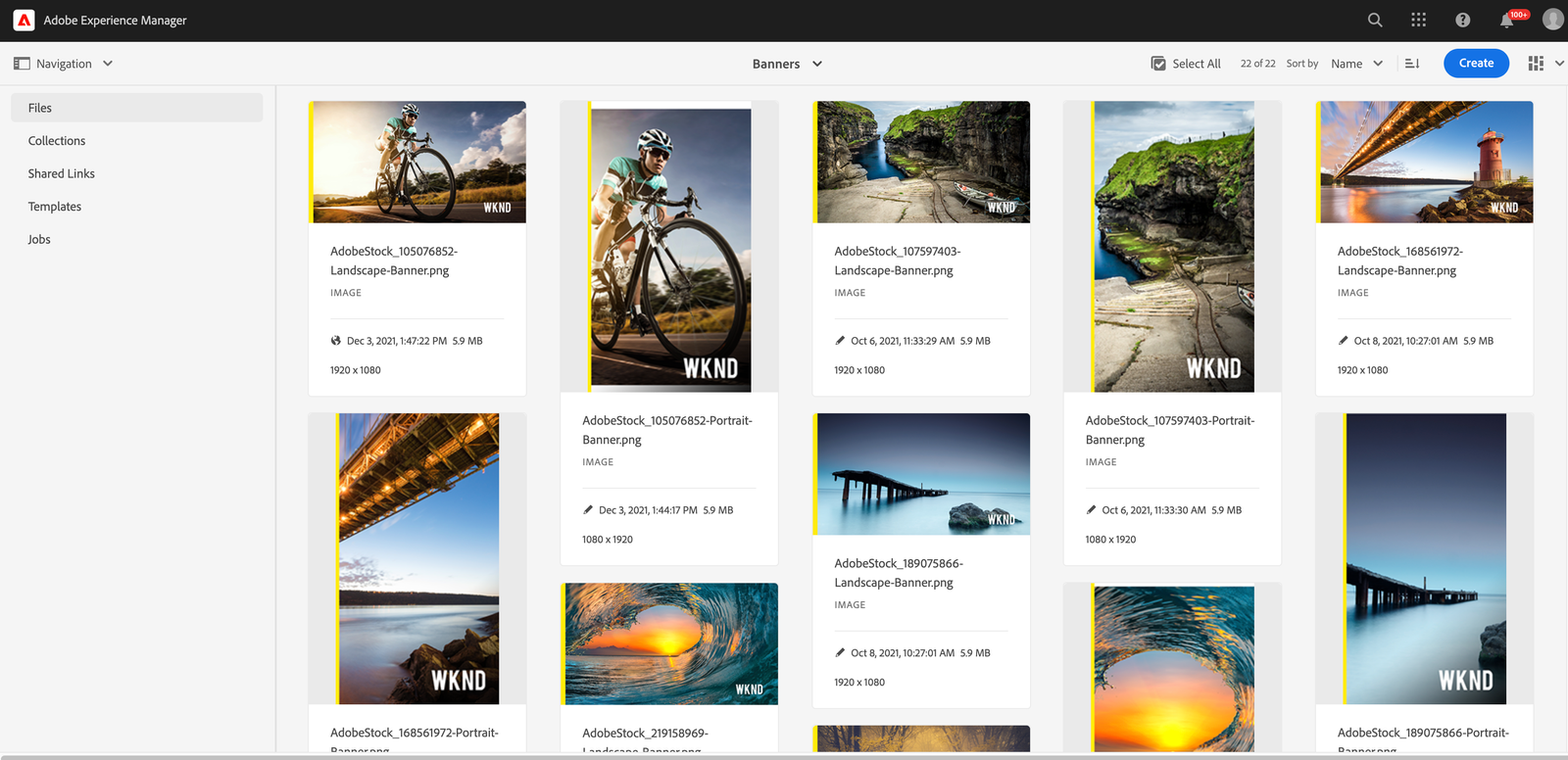
Known for its broad range of integrations, this tool offers quick updates, simple asset distribution, and intuitive folder structure. However, it is expensive and requires advanced training.
Filecamp:
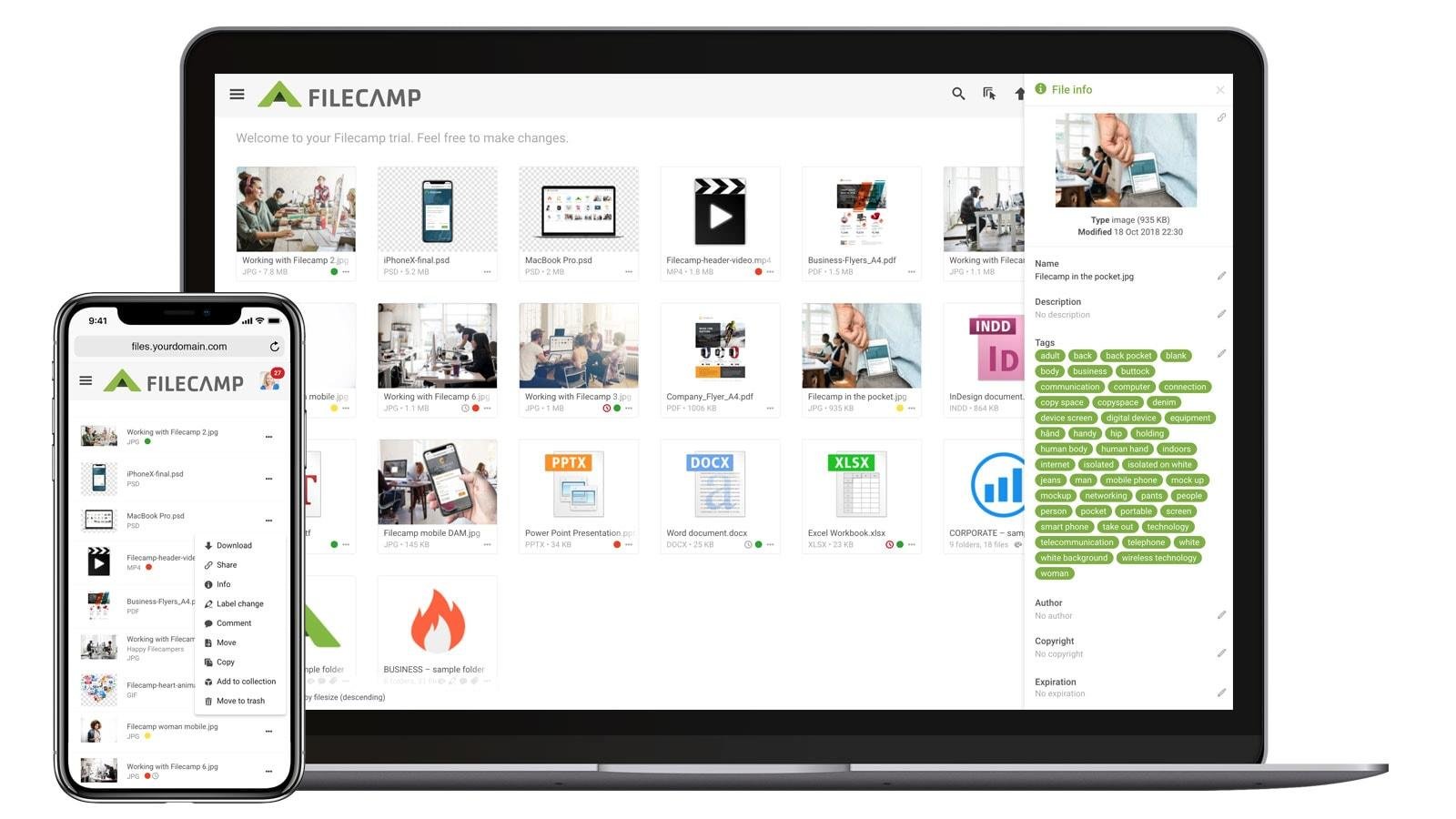
A budget-friendly option, Filecamp is powerful with robust tagging and customization options, but lacks integrations and advanced features.
Acquia DAM (Widen):

Ideal for large teams, especially those using Drupal CMS. It offers multiple search options, easy file access, and a reliable support team. However, it can be slow and requires conversion to save images.
Brandfolder:
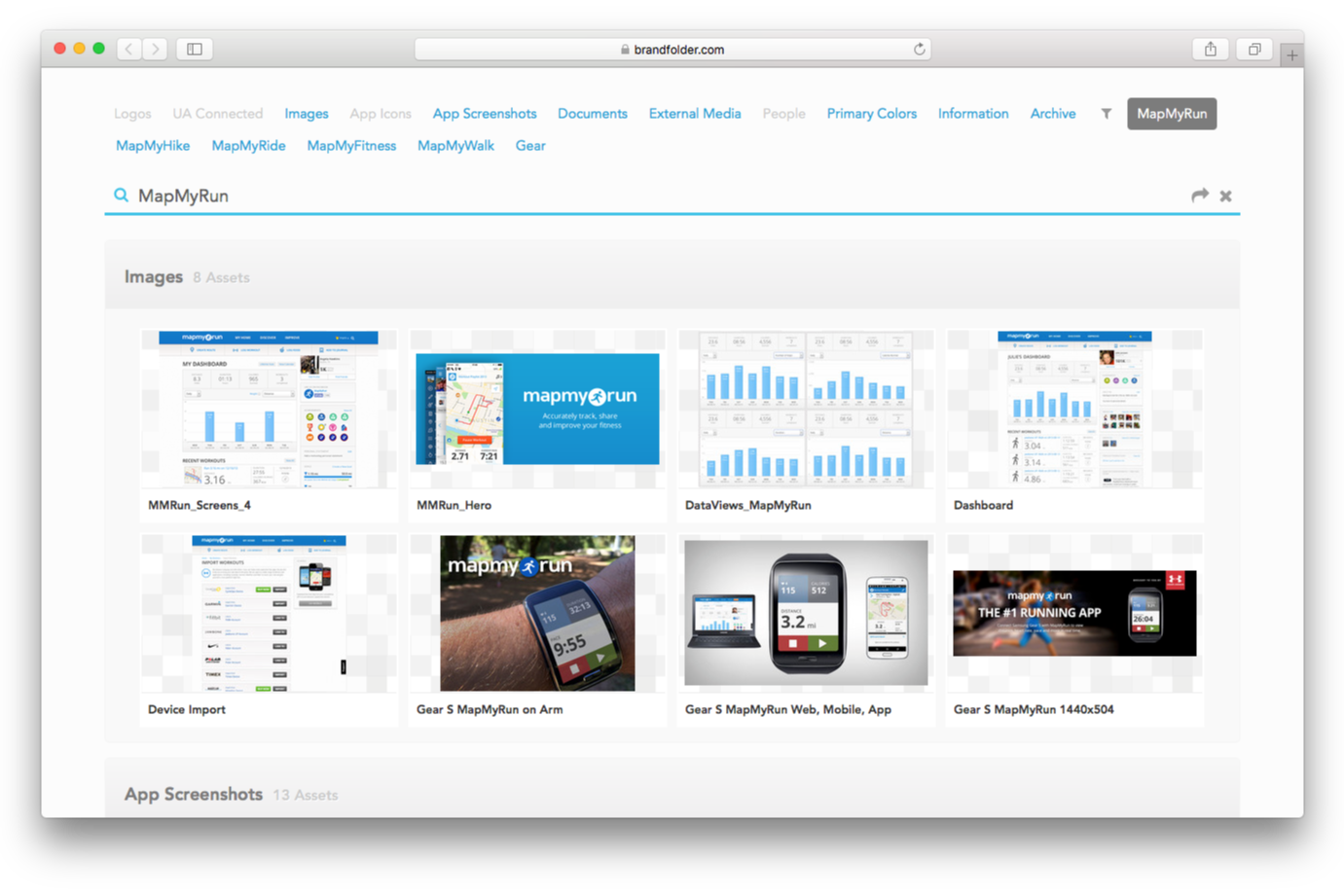
Highly rated for its advanced search options, brand consistency tools, and real-time asset analytics. It’s versatile, but its interface can be complex for new users.
Pimcore:
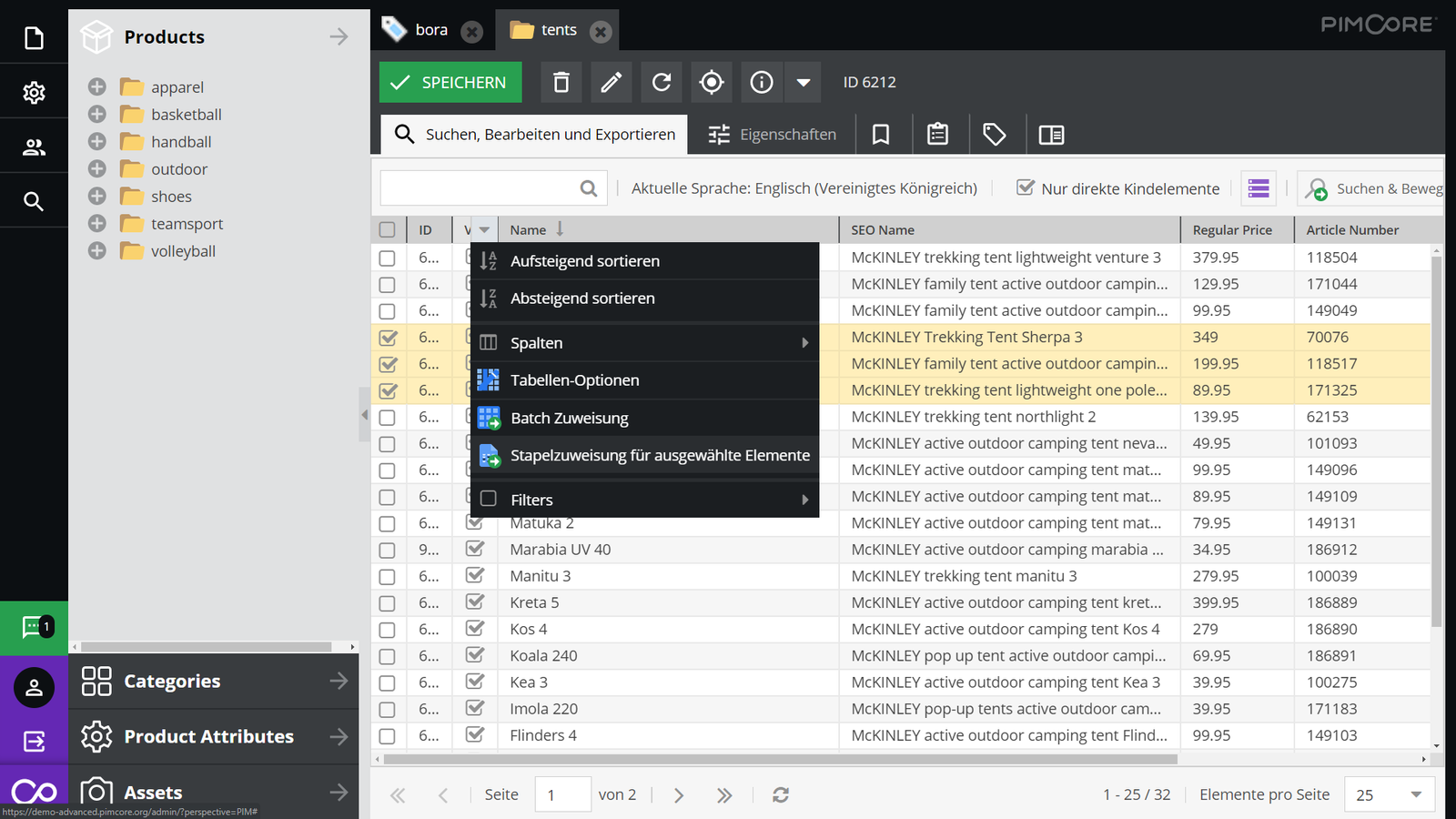
An open-source option offering comprehensive features including file management, workflow management, and digital asset delivery. It’s free but complex for new users.
Canto:

User-friendly with customizable options and excellent customer support but uploading files can be time-consuming.
Bynder:

Stands out for its user-friendly interface and creative workflow module. It’s ideal for large teams but can be expensive and less customizable.
Key Considerations for Choosing a Marketing Asset Management Solution in Adobe Experience Manager
When selecting a marketing asset management solution, consider the following tips:
-
- Scalability: Choose a tool that can grow with your company. Consider the size of your team and the volume of assets you manage.
- Integration Capabilities: Ensure the tool can seamlessly integrate with other systems and platforms your business uses.
- User-Friendliness: A tool with an intuitive interface and simple onboarding process will be easier for your team to adopt.
- Customization and Branding: Look for tools that offer customization options to align with your brand’s specific needs.
- Support and Training: Consider the level of customer support and training provided, as these can significantly impact on the ease of implementation and ongoing use.
- Budget: Balance the features you need with the tool’s cost, keeping in mind both initial and ongoing expenses.
By carefully evaluating these factors, you can choose a marketing asset management tool that effectively meets your company’s needs.
Implementing a Marketing Asset Management Solution
Best practices for implementing a successful digital strategy, particularly in a marketing context:
-
- Clarify and Communicate Strategy: Clearly define the digital strategy and ensure it’s understood throughout the organization. Effective communication across all levels is crucial for alignment and successful implementation.
- Set Realistic Goals and Use Data: Employ SMART (Specific, Measurable, Achievable, Realistic, Timely) goals. Utilize data to track the effectiveness of the strategy and make informed decisions for future implementations.
- Choose Appropriate Digital Marketing Strategies: Select digital marketing strategies that align with your brand and target audience. Consider various digital marketing types and go with methods that offer the best ROI.
- Adapt to Changing Environments: Be flexible and adaptable to changes. This includes understanding and responding to evolving customer needs and market trends.
- Leverage Technology and Analytics: Utilize technology effectively for strategy implementation. This involves using digital tools and analytics for better understanding and decision-making.
For marketing asset management solution implementation, these practices can be specifically tailored. It’s important to ensure that the tool aligns with your marketing strategy and offers data analytics capabilities for tracking performance. Training and change management should focus on clear communication about the benefits and use of the tool, setting realistic goals for its implementation, and ensuring ongoing support and adaptability to changes in marketing needs and technology advancements.
Case Studies: Transformative Impact of Asset Management
Asset management firms have revolutionized their marketing strategies by embracing advanced marketing asset management (MAM) tools and techniques. Marketing now plays a key role in revenue generation, with a focus on digital acumen, data utilization, and personalized campaigns. Effective MAM software includes user-friendly interfaces, digital asset libraries, version control, and collaboration features. Firms avoid common pitfalls such as generic branding and ineffective digital resource use by differentiating their brand and providing educational content. Growing businesses benefit from MAM’s unified content approach, addressing content fragmentation and supporting efficient brand management. The trend towards data-driven, personalized marketing tactics marks a significant shift in the industry.
Conclusion
In 2024, the digital marketing landscape is heavily influenced by AI advancements, making Marketing Asset Management (MAM) solutions crucial for efficiently organizing and adapting marketing strategies. MAM facilitates quick access and modification of assets, aligns with agile marketing needs, and ensures brand integrity. It’s essential for managing diverse digital assets, especially with emerging trends like voice and image searches. Key features of MAM include centralized asset libraries, brand consistency, and workflow efficiency. Challenges include integrating advanced technologies and balancing innovation with cybersecurity. MAM tools vary in features and suitability, and selecting the right one involves considering scalability, integration, user-friendliness, and budget.
References & Further Reading
Based on the research conducted from credible sources and industry reports, here is a list of sources used in the blog, along with suggestions for further reading for those interested in the subject of marketing asset management and digital marketing trends:
Digital Marketing Benchmark Report 2024 – Influencer Marketing Hub
-
- Key Findings: Importance of SEO, ROI of social media, and effectiveness of multi-channel marketing.
- Source: Influencer Marketing Hub
- Further Reading: “The Successful ROI of Social Media” and “Customer Experience Strategy Prioritization” sections in the same report for insights into social media marketing and customer experience strategies.
2024 Trends: Transforming the Marketing Landscape Through Consolidation – G2
-
- Key Insights: Consolidation of marketing products, preferences for single solutions, and buyer behavior trends.
- Source: G2 Research
- Further Reading: G2’s 2023 Software Buyer Behavior Report for detailed insights into software buyer preferences and trends.
- Navigating the Digital Landscape: Top Trends to Watch in 2024 – Making Science
- Focus: Key digital trends such as Customer Data Platforms (CDP), AI in Advertising, TikTok Search, Connected TV (CTV), and Privacy-Centric Marketing.
- Source: Making Science
- Further Reading: Additional blog posts on Making Science dive deeper into each of these trends.
2024 Digital Marketing Benchmark Report by Industry – Matrix Marketing Group
-
- Insights: Industry-specific digital marketing benchmarks, including website traffic, lead generation, and social media engagement.
- Source: Matrix Marketing Group
- Further Reading: Detailed industry-specific sections in the report for targeted marketing insights.
Digital Marketing Trends Report 2024 – Boostability
-
- Highlights: Evolutions in SEO strategies, the role of AI and Machine Learning, and the impact of AI on digital marketing.
- Source: Boostability
- Further Reading: In-depth articles on AI applications in digital marketing and emerging technologies in the same report for a comprehensive understanding of future trends.
These sources provide a comprehensive overview of the current and emerging trends in digital marketing and asset management, offering valuable insights for businesses looking to optimize their marketing strategies in the rapidly evolving digital landscape.
